The SPATA5-SPATA5L1 ATPase complex directs replisome proteostasis to ensure genome integrity
- PMID: 38554706
- PMCID: PMC11055677
- DOI: 10.1016/j.cell.2024.03.002
The SPATA5-SPATA5L1 ATPase complex directs replisome proteostasis to ensure genome integrity
Abstract
Ubiquitin-dependent unfolding of the CMG helicase by VCP/p97 is required to terminate DNA replication. Other replisome components are not processed in the same fashion, suggesting that additional mechanisms underlie replication protein turnover. Here, we identify replisome factor interactions with a protein complex composed of AAA+ ATPases SPATA5-SPATA5L1 together with heterodimeric partners C1orf109-CINP (55LCC). An integrative structural biology approach revealed a molecular architecture of SPATA5-SPATA5L1 N-terminal domains interacting with C1orf109-CINP to form a funnel-like structure above a cylindrically shaped ATPase motor. Deficiency in the 55LCC complex elicited ubiquitin-independent proteotoxicity, replication stress, and severe chromosome instability. 55LCC showed ATPase activity that was specifically enhanced by replication fork DNA and was coupled to cysteine protease-dependent cleavage of replisome substrates in response to replication fork damage. These findings define 55LCC-mediated proteostasis as critical for replication fork progression and genome stability and provide a rationale for pathogenic variants seen in associated human neurodevelopmental disorders.
Keywords: 55LCC; AAA+ ATPase; C1orf109; CINP; SPATA5; SPATA5L1; genome instability; replication stress response; replisome regulation/proteostasis; unfoldase.
Copyright © 2024 Elsevier Inc. All rights reserved.
Conflict of interest statement
Declaration of interests R.A.G. is a co-founder of RADD Pharmaceuticals. None of the work in this study relates to this company.
Figures
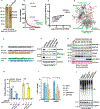
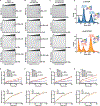

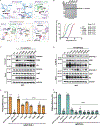
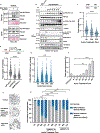
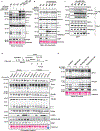
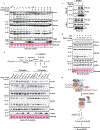
Similar articles
-
Cryo-EM structure of the AAA+ SPATA5 complex and its role in human cytoplasmic pre-60S maturation.Nat Commun. 2025 Apr 23;16(1):3806. doi: 10.1038/s41467-025-58894-0. Nat Commun. 2025. PMID: 40268917 Free PMC article.
-
Localized K63 Ubiquitin Signaling Is Regulated by VCP/p97 During Oxidative Stress.Mol Cell Proteomics. 2025 Mar;24(3):100920. doi: 10.1016/j.mcpro.2025.100920. Epub 2025 Jan 28. Mol Cell Proteomics. 2025. PMID: 39880084 Free PMC article.
-
DNA polymerase α/primase extraction from chromatin by VCP/p97 restricts ATR activation during unperturbed DNA replication.Nat Commun. 2025 Jul 1;16(1):5706. doi: 10.1038/s41467-025-60077-w. Nat Commun. 2025. PMID: 40593507 Free PMC article.
-
2024 VCP International Conference: Exploring multi-disciplinary approaches from basic science of valosin containing protein, an AAA+ ATPase protein, to the therapeutic advancement for VCP-associated multisystem proteinopathy.Neurobiol Dis. 2025 Apr;207:106861. doi: 10.1016/j.nbd.2025.106861. Epub 2025 Mar 2. Neurobiol Dis. 2025. PMID: 40037468 Review.
-
Strategic role of the ubiquitin-dependent segregase p97 (VCP or Cdc48) in DNA replication.Chromosoma. 2017 Feb;126(1):17-32. doi: 10.1007/s00412-016-0587-4. Epub 2016 Apr 18. Chromosoma. 2017. PMID: 27086594 Review.
Cited by
-
Cryo-EM structure of the AAA+ SPATA5 complex and its role in human cytoplasmic pre-60S maturation.Nat Commun. 2025 Apr 23;16(1):3806. doi: 10.1038/s41467-025-58894-0. Nat Commun. 2025. PMID: 40268917 Free PMC article.
-
Ribosome biogenesis in plants requires the nuclear envelope and mitochondria localized OPENER complex.Nat Commun. 2025 Aug 7;16(1):7301. doi: 10.1038/s41467-025-62652-7. Nat Commun. 2025. PMID: 40775240 Free PMC article.
-
A programmed decline in ribosome levels governs human early neurodevelopment.Nat Cell Biol. 2025 Aug;27(8):1240-1255. doi: 10.1038/s41556-025-01708-8. Epub 2025 Aug 4. Nat Cell Biol. 2025. PMID: 40760247 Free PMC article.
-
Crossing the border: Replication fork adducts move to lysosomes for autophagic repair.Mol Cell. 2024 Oct 17;84(20):3868-3870. doi: 10.1016/j.molcel.2024.09.021. Mol Cell. 2024. PMID: 39423795 Free PMC article.
References
Publication types
MeSH terms
Substances
Grants and funding
LinkOut - more resources
Full Text Sources
Molecular Biology Databases
Research Materials
Miscellaneous

